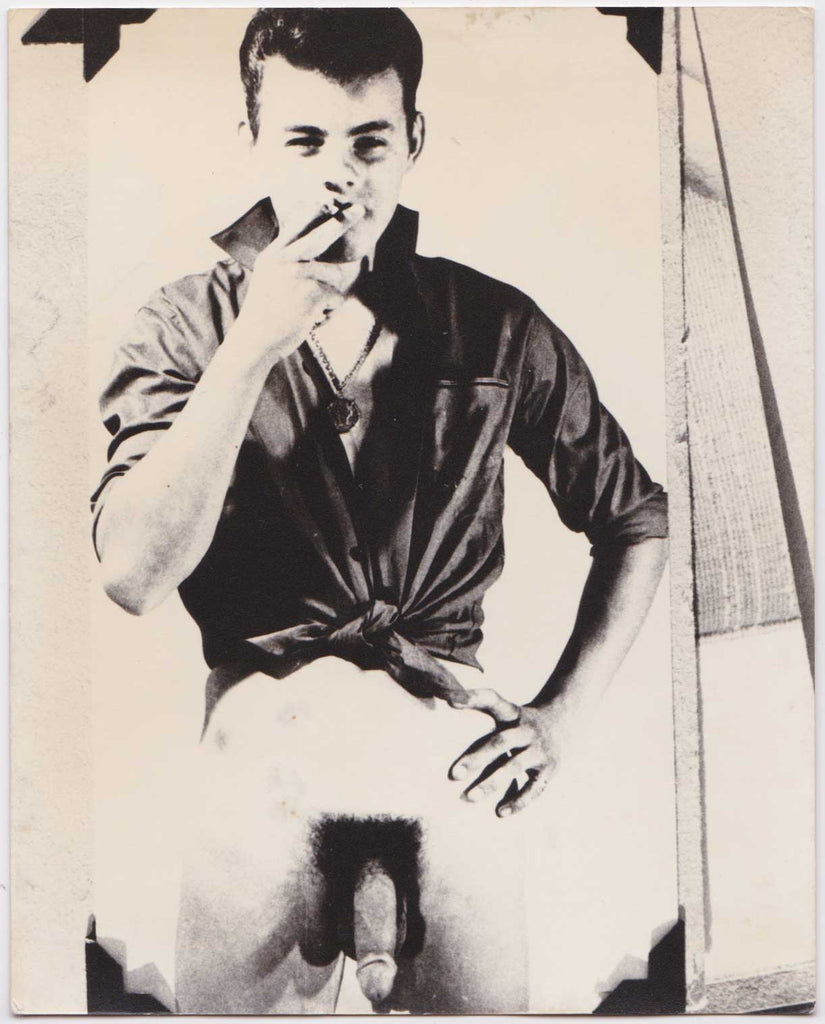You may have noticed a number of the photos listed on Homobilia have the term "copy print" in the description. Copy prints are simply prints made from other photos, rather than from negatives.
The main reason they're common for subject matter like male nudes is peoples' fear of sending them through the USPS. Up until the late 1960s the consequences of mailing nude photos could be very severe if you were caught.
Sometimes it's easy to tell a copy print. You might notice the edges of the original photo don't align with the edges of the copy. Or maybe you’ll see things like photo corners (above) or a bit of a table top. The clarity and focus are not as sharp as the original (below) and there are often miscellaneous artifacts, spots, etc. on the copy print.

Another sign of a copy print is the paper wasn't manufactured when the photo was taken. You’ll even find eBay sellers making copy prints on their inkjet printers, and the unscrupulous ones try to pass them off as “vintage.”
But sometimes it's not so easy to identify a copy print and it comes down to a feeling that it "looks like a copy print." So when I have my suspicions I mention it in the listing description to be transparent.
Does it really matter? Certainly you should expect to pay less for a copy print than an original photo. But if you truly love a photo it may not make much difference if it's a vintage copy print. In a way it adds a layer of meaning.



Comments on this post (0)